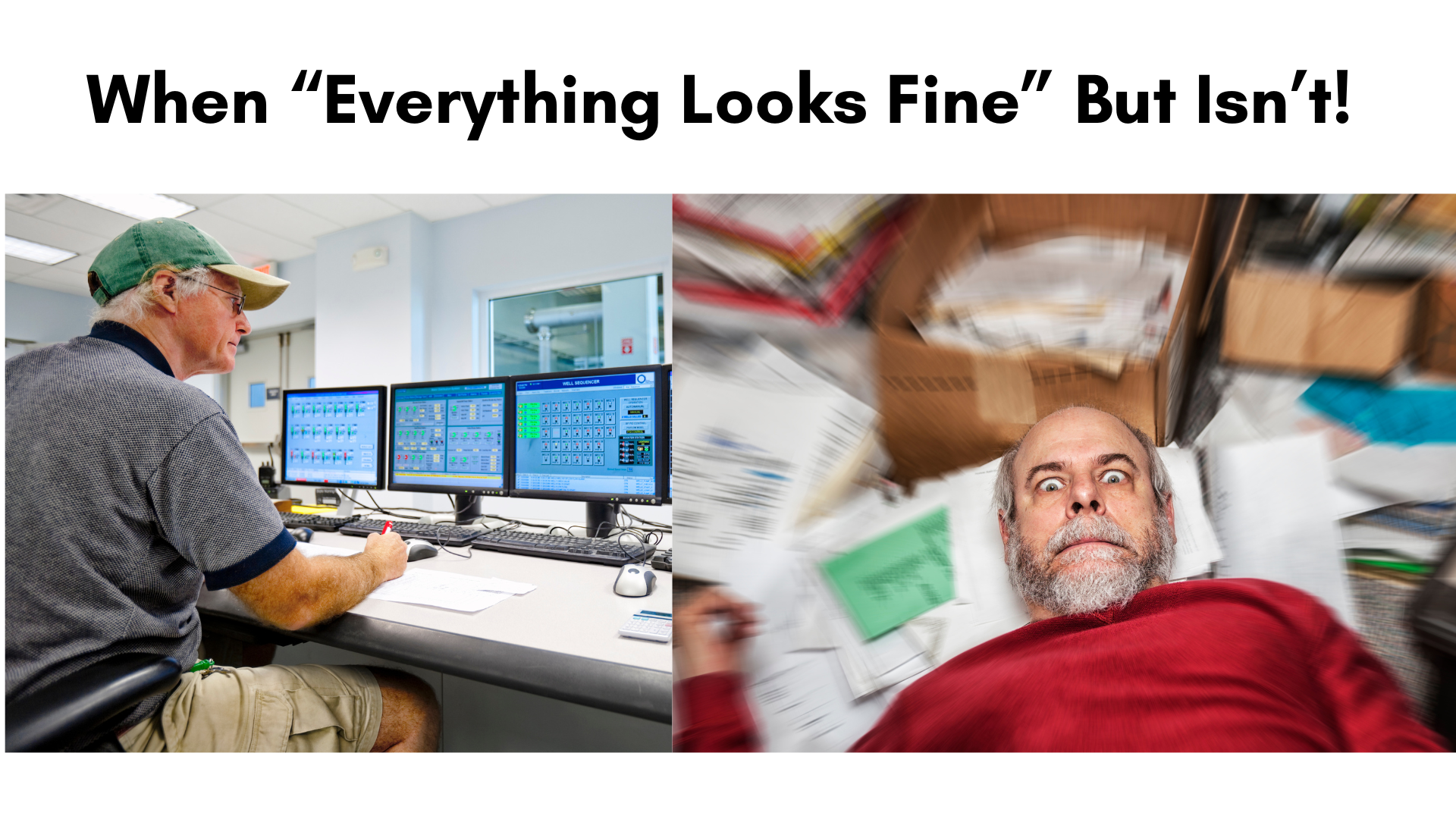What Your Plant Teams Aren’t Telling You (But You Wish You Knew Sooner)
A supervisor calm in the control room, next to an image surrounded by paper, looking overwhelmed. Control vs chaos, what’s invisible is uncontrollable.
When “Everything Looks Fine” Still Leads to Fires
You get the end-of-day report. Everything looks green. But that lingering issue from last week? It just showed up again. Another product delay. Another line shutdown. Another fire to put out.
You might be thinking: "Why didn’t we see this coming?"
The truth is, most problems don’t explode out of nowhere. They simmer quietly behind checklists, habits, and assumptions. And by the time they reach your desk, the damage is already done.
In food manufacturing, what you don’t see is often what costs you the most.
Because what’s invisible is uncontrollable.
The Illusion of Control
Most operations leaders rely on dashboards, SOPs, and paper logs. On the surface, they give us structure. But behind the scenes, they often give us a false sense of control.
By the time an issue shows up in a report, it’s already a day late. And when you’re relying on manual checklists, you’re really relying on memory, pressure, and penmanship.
That’s when the fires start. And suddenly, everyone’s scrambling to fix something that looked fine just hours ago.
You don’t need more reports. You need more reality.
It’s Not About Blame
Let’s be clear: frontline teams aren’t the problem.
They’re resourceful. They hustle. And they’re constantly adapting to meet production demands.
But when a machine goes down, or changeover is running late, something gives. Maybe a temperature check is skipped. Maybe a cleaning log gets filled in at the end of a shift. Maybe a form is signed without the full inspection.
These aren’t careless employees. These are people sprinting to keep production moving—making on-the-fly calls while hoping they don’t cause a bigger issue down the line.
The real issue? Our systems don’t catch it in real time.
What’s invisible is uncontrollable.
Silent Failures You Never Hear About (Until It’s Too Late)
Here are just a few things that go unnoticed every day in food plants:
A pasteurizer temperature is logged too early—before the threshold is reached
A broken thermometer sits unused, while readings are estimated
A checklist gets backfilled at the end of a shift
An allergen clean is rushed to meet production targets
A visitor log is signed long after the person entered the plant
Each of these seems small. But any one of them could lead to a recall, a safety issue, or a costly audit failure.
And the worst part? On paper, it all looks fine.
The Culture of “This Is the Way We’ve Always Done It”
If it ain’t broke, don’t fix it.
That mindset is everywhere. And it makes sense—until you realize that firefighting has become your team’s full-time job.
SOPs are followed "most of the time." Checklists are "usually accurate." And reports are "good enough."
It’s not that people don’t care. It’s that the systems in place don’t give them a better way.
So they rely on habit. On memory. On making it through another shift.
And the cycle continues.
What’s invisible is uncontrollable.
What Happens When You Can See in Real Time
Now imagine this:
A pasteurization machine is running. An operator logs the temperature before the cycle is complete. The reading is too low.
Instead of waiting until QA reviews the paperwork tomorrow, your system flags the issue instantly. The production manager gets an alert. Action is taken before the product moves to packaging.
No rework. No delay. No fire.
This isn’t about adding more tech. It’s about adding visibility.
When you can see what’s really happening in the last 10 feet of execution, you don’t have to guess. You can lead with confidence, not react out of panic.
What’s invisible is uncontrollable. But real-time visibility gives you control back.
From Firefighting to Prevention
Strong leaders don’t just enforce SOPs. They enable teams to follow them.
When the right tools are in place, you can:
Spot trends before they become problems
Act on data instead of assumptions
Coach instead of micromanage
You build a culture of accountability that doesn’t rely on fear. It relies on facts.
And facts don’t hide.
What Might You Be Missing?
Ask yourself:
Are SOPs being followed the way we think they are?
When was the last time I found out about a problem before it caused a delay?
How many small misses are we overlooking today?
If the answer is "I’m not sure," you’re not alone.
But that’s exactly why visibility matters.
Because when you finally can see the truth of what’s happening, you don’t just put out fires.
You prevent them.
You lead with confidence.
Because what’s invisible is uncontrollable.
Curious what this kind of visibility could look like in your plant? Let’s connect.
Rebecca Wormleighton
Co-founder @ Zendelity
Rebecca.Wormleighton@Zendelity.com
(613) 369 - 5075








